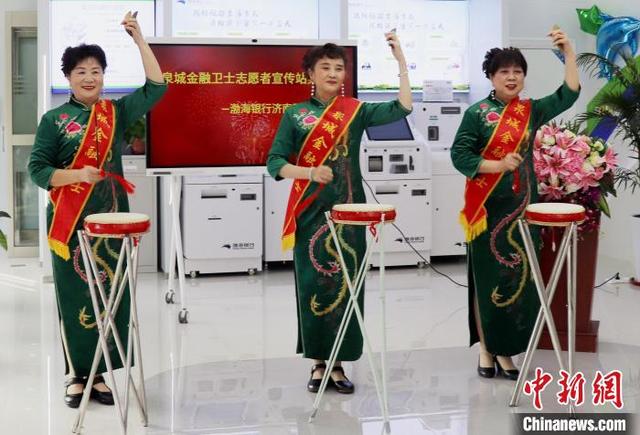He Weiwen: Decline in Exports Highlights Global Supply Chain Shifts. What Should be Done?|TiPost Exclusive
China’s import and export data of July released on Tuesday shows a general stability with hidden concerns. Exports to major traditional markets and exports from some of China"s major sectors almost simultaneously declined. One important reason for the decline comes from the transfer of the supply chain, with signs being increasingly apparent.
 (资料图片)
(资料图片)
According to the General Administration of Customs, from January to July 2023, China"s total import and export value reached 23.55 trillion yuan, a record year-on-year increase of 0.4%. Among them, exports were 13.47282 trillion yuan, an increase of 1.5%, and imports were 10.07933 trillion yuan, a decrease of 1.1%. However, the value in US dollars decreased significantly. The total import and export value was $3400.239 billion, a year-on-year decrease of 6.1%. Among them, exports were $1,944.903 billion, a fall of 5.0% and imports were $1,455.336 billion, a decrease of 7.6%.
It is noteworthy that this is an accelerated decline since May. The USD value of total imports and exports in May, June and July (5月到7月是过去时间 不能用现在完成时)dropped by 6.2%, 10.1%, and 13.6% respectively compared to the same period last year. Among them, exports have decreased by 7.5%, 12.4%, and 14.5% year-on-year respectively, while imports were down by 4.5%, 6.8%, and 12.4% year-on-year in May, June and July, respectively.
The decline in exports has a significant impact on the Chinese economy. Net exports contributed to GDP growth by -0.6 percentage point in the first half of the year. While in the first half of 2022, its contribution was 0.5 percentage points. If net exports had contributed zero to GDP growth in the first half of 2023, the year-on-year GDP growth would have been 6.0% instead of 5.5%. (上半年经济增长是5.5% 所以必须是虚拟语气)
The Purchasing Managers" Index (PMI) released by the National Bureau of Statistics shows that the new export orders index, which indicates the foreign demand for the next 3 to 6 months, was 47.2, 46.4, and 46.3 for May, June, and July respectively, all below 50, the threshold separating contraction from expansion. Therefore, the import and export situation in the second half of the year remains severe.
In response, China, while expanding trade with countries along the Belt and Road, Russia, and Central Asian countries to explore new markets, focuses on traditional developed markets. Inaddtion to strengthening independent innovation, China is fully open to the world and is cooperating with the global supply chain, including developed countries in Europe and North America. By doing so, China tries to make its export products an indispensable part and key node in the global supply chain of the industry, thereby ensuring stability in its import and export trade.
(I) The exports to most major traditional markets and major industries simultaneously declined
1. Traditional markets.The export decline to developed markets in the first seven months was quite visible. The exports to the European Union, the United States, Japan, and South Korea decreased by 8.9%, 18.6%, 6.8%, and 6.4% respectively, which were 2.3, 0.7, 2.1, and 1.8 percentage points worse respectively compared to the same period last year. It is worth noting that the export to the Association of Southeastern Nations (ASEAN), the largest trading partner, dropped by 2.0%, a reversal from the growth of 1.5% in the first half of the year. The trend of rapid export growth to ASEAN in recent years has reversed.
The export to Latin America fell by 3.5%, a 2.4 percentage point increase in decline compared to the first half of the year. Only the export to Africa and Russia maintained growth. The export to Africa grew by 12.3% compared to the same period last year, a decrease of 3.1 percentage points compared to the first half of the year. The export to Russia saw a sharp increase of 73.4%, but the growth also slowed down compared to the 78.1% increase in the first half of the year.
Notably, the proportion of China’s exports to the largest trading partner RCEP decreased from around 30% when the latter was established in 2020 to 27.6%. The combined proportion of China’s main traditional markets, including the European Union, Britain, the United States and the 14 RCEP countries, decreased from 61.7% in 2022 to 59.5% in just half a year.
2. Main industries
(1) Export of traditional labor-intensive products all declinedexcept for 10.0% growth in bags.Textile products decreased by 11.9%, clothing 8.3%, footwear 9.3%, ceramic products 11.3%, steel 8.0%, furniture 10.3%, and toys 13.7%. The decline was larger than the first half of the year.
(2) The electromechanical productsonly fell by 2.3%, mainly supported by strong growth in the automotive industry and parts sector. Among them, automotive exports grew by 103.8%, and automotive parts exports grew by 10.1%. The two combined contributed to a net increase of $32.755 billion, driving a 2.8 percentage point increase in the export of electromechanical products. However, most other categories showed a decline. Automatic data processing equipment, where China has had a competitive advantage for many years, decreased by 24.9%, mobile phones 12.8%, audio and video equipment 6.7%, home appliances 2.1%, and integrated circuits 17.2%. It is worth noting that the decline in the export of electromechanical products accelerated sharply in July, with a year-on-year decline of 10.8%. If this trend continues, the export of electromechanical products for the whole year is unpromising.
(3) Export of high-tech products decreased by 14.7%, which was nearly three times the overall export decline of 5.0%. With a net decrease of $80.584 billion, the sector accounted for 68.4% of the total net decrease of $117.781 billion in exports. It can be concluded that two-thirds of China"s export decline in the first seven months came from high-tech products, and one-third from traditional products. This indicates that not only the total value of exports in China has declined, but the country’s export structure has degraded.
(2) Total import value fell, with degraded structure
The total imports in the first 7 months were 1455.376 billion US dollars, a year-on-year decrease of 7.6%. The import of primary products such as agricultural products, coal, and natural gas increased by 5.4%, 41.4%, and 1.1% respectively. Due to the decrease in international oil prices, although the imports of crude oil decreased by 12.3% year-on-year, the import volume increased by 12.4% year-on-year. The import of electromechanical products decreased significantly by 16.5%. Among them, the imports of machine tools, automatic data processing equipment, diodes and other semiconductor equipment, automobiles, chips, and flat display devices went down by 12.2%, 26.1%, 20.1%, 22.3%, 21.6%, and 29.8% respectively. The import of high-tech products decreased by 16.2%. The degradation of the import structure is more severe than that of exports.
Credit: Visual China
(III) Political and economic reasons for the decline in exports
1. Political reasons: Partial transfer of the supply chain caused by geopolitical tensions and fragmentation of geopolitical economy.General analysis often attributes the decline to the global economic downturn and the shrinking imports of major markets. But this does not quite fit the facts. According to the latest "World Economic Outlook" released by the International Monetary Fund on July 25, 2023, the world GDP is expected to grow by 3.0% in 2023, which is 0.2 percentage points higher than the forecast in April. The world trade volume is expected to grow by 2.0%. Both follows a low-growth trend.
One of the important reasons for the decline in exports comes from the transfer of the supply chain, with the signs becoming increasingly apparent.
According to statistics of the US Bureau of Economic Analysis, the total amount of goods imported into the United States in the first half of 2023 was $1,521.116 billion, a year-on-year decrease of 6.2%, or $100.994 billion. However, about 80% of the decrease is due to a reduction in imports from the Asia-Pacific region, with a net decrease of $80.237 billion. More specifically, 85% of the reduction in imports from the Asia-Pacific region came from a decrease in imports from China, with a net decrease of 25.2% to $68.406 billion. Imports from Japan, South Korea, India, Vietnam, and Taiwan are also dropped. Imports from Mexico increased by 5.4%, with a net increase of $12.131 billion and those from the European Union increased by 6.4%, with a net increase of $17.318 billion.
The decline is particularly evident in the trade of high-tech products.According to the US Department of Commerce, the total amount of high-tech exports from the United States in the first five months of 2023 was $166.893 billion, a year-on-year increase of 7.6%. However, the main growth came from exports to the European Union, which increased by 31.6% year-on-year and the net increase was $10.821 billion, accounting for 92.3% of the net increase in global exports. US exports to the Asia-Pacific region only increased by $303 million, with a decrease of $951 million in exports to China. During the same period, US imports of high-tech products from the world were down by 1.2% year-on-year, with a net decrease of $3.032 billion. The decrease was almost entirely from the Asia-Pacific region (a net decrease of $6.708 billion), including a sharp decrease of 23.7% to $14.352 billion in imports from China and a net decrease of 35.5% to $4.663 billion in imports from South Korea. On the contrary, US imports from the European Union in this period increased by a net $7.664 billion, an increase of 15.7%. And imports from Canada and Mexico remained basically flat. (这里应该是flat; 没有增加也减少的意思)The high-tech supply chain between the United States and Europe and between North American countries is strengthening, while that between the United States and the Asia-Pacific region is weakening.
According to the Chinese customs, imports from China by the European Union dropped by 8.9% year-on-year in the first 7 months. However, statistics from the U.S. Department of Commerce showed that imports from the United States by the European Union increased by 7.9% in the first half of the year, which indicates that the European Union market is not sluggish. It"s just that the proportion of imports from China decreased while that from the United States increased.
These data clearly demonstrate the impact of the U.S. policy to contain and suppress China along with its allies, especially in terms of key high-tech products such as chips. It has also increased the risks for many multinational companies operating or producing products in China, to some extent leading to the partial transfer of production capacity to reduce risks. This is particularly evident in information and communication technology products, including chips, semiconductors, data processing equipment, and mobile phones.
A study by the IMF shows that since 2018, the number of technology and trade restrictive measures in the world has tripled. In 2019, there were over 1,000 such restrictions. The number reached 1,600 in 2020, and was close to 2,500 in both 2021 and 2022. The study indicates that this fragmentation of the global economy is threatening the world economy and increasing the risk of economic "decoupling" among countries. If the economy is divided into different camps, global GDP would decrease by 1.2 percentage points. If non-tariff barriers are not adjusted, global GDP would decrease by 1.5 percentage points, with the Asia-Pacific region experiencing a decrease of 3.3 percentage points. At worst, it could decrease by 8.5 percentage points if there are industry mismatches and hindered knowledge dissemination. If there is a comprehensive economic "decoupling," global GDP could decrease by 8 to 12 percentage points.
2. Economic reasons: Changes in China’s export competitiveness. More specificly, the loss of competitive advantage of traditional labor-intensive products. In capital-intensive products, the competitiveness of household appliances, audio-video products, and flat panel display products has weakened. However, new competitive advantages in new energy vehicles, photovoltaic cells, and other products are evident.
(4) Preliminary judgments and suggestions for the near-term outlook:
1. From the perspective of apparent data evolution, due to the obvious growth slowdown or even decline in China’s exports, especially to the United States since September 2022, a low base effect is formed. Therefore, the year-on-year growth rate of exports in the fourth quarter may be slightly stable, and the possibility of accelerating decline is relatively small. However, it is not highly likely to see a strong recovery and growth within the year.
Due to the ongoing trend of fragmentation in the global economy, it is unlikely that the United States will fundamentally change its containment, suppression against, and decoupling from China. China"s imports and exports face severe external challenges in the medium term, which need to be fully estimated.
2. The European Union has begun to show concerns about the surge in China’s exports of new energy vehicles and "information risks." The anti-dumping investigations and security reviews similar to the one against China’s photovoltaic products in 2006 are possible. It is necessary to be well prepared and take preventive measures.
3. While expanding trade with countries along the Belt and Road Initiative, Russia, and Central Asian countries toexplore new markets, we must not neglect traditional developed markets. First and foremost, efforts should be made to stabilize trade with the 14 RCEPcountries.
4. Efforts should be made to stabilize trade between China and the United States, and between China and Europe. While promoting official dialogue and exchanges, China must persistently and resolutely oppose the U.S. policy of high-tech decoupling and bans. At the same time, it is necessary to strengthen mutually beneficial cooperation with American industries and companies. The three major chip companies, namely Intel, Qualcomm, and NVIDIA, are lobbying Washington against new chip restrictions on China. Both China and the U.S. semiconductor industry associations advocate for mutually beneficial cooperation. The enormous potential of the Chinese market cannot be ignored by the American chip companies. Efforts should be made to lift or postpone restrictions and bans on China. At the same time, China should greatly enhance cooperation between Chinese provinces and American states to stabilize bilateral economic and trade relations. Also, China should stabilize its trade with Europe and strive for the early recovery of China-Europe trade. The current focus should be on stabilizing governmental economic and trade cooperation, which can be achieved through expanding imports from the European Union and attracting European Union companies to invest in China to promote exports to Europe.
5. Cultivate new product competitiveness.Under the overall guideline of promoting high-quality development, China should carefully study and sort out the competitiveness of major export products. China should enhance the competitiveness of labor-intensive products with big data and artificial intelligence and create new advantages. It should enhance and digitalize capital-intensive products and form a batch of new competitive products in new energy vehicles, environment, and information technology.
6. While enhancing independent innovation, China should open up in all aspects and cooperate with the global supply chain, including cooperation with developed countries in the United States and Europe. In this way, China can make its export products an indispensable part and key node in the global supply chain of the industry and ensure greater stability to import and export trade.
(He Weiwen is a senior researcher at the Globalization Think Tank, a TiPost International Think Tank expert, and a former commercial counselor at the Chinese Consulate General in New York and San Francisco. This article is an exclusive column by He for the TiPost App)
关键词:
上一篇:CPI为什么会出现两年来首次负增长,CPI负增长意味着什么?
下一篇:最后一页
精心推荐
- 如何把旧电脑的数据转移到新电脑上?
- 2023年浙江队主场继续落户湖州
- 医疗器械板块1月10日涨1.48%,春立医疗领涨,北向资金增持3.51亿元_天天头条
- 描写草莓搞笑的句子(精选275句)_当前焦点
- 泛亚微透(688386):泛亚微透关于持股5%以上股东减持比例达到1%的提示性公告
- 今热点:广州检方五年来追偿修复生态、治理环境费用3.39亿元
- 小鲨易贷逾期1天会上征信系统吗
- 【光明图刊】温馨服务护航旅客回家路
- 异质结电池HJT板块1月9日涨0.07%,杭萧钢构领涨,主力资金净流出8.7亿元
- e点贷借款逾期拖欠多久上征信 全球快播报
- 海天味业的成本之压:毛利率连年大降,净利润下行态势能否止住?
- 昌平区普通工伤如何计算_天天资讯
- 热点评!Notion 很好,但我已经换到了钉钉文档
- 时讯:【与时代同梦与梦想同行】秦一(小一姐姐):我愿讲述最美的中国故事
-

1、确保小猫至少八周大,洗澡不适合八周以下的猫。在八周之前,母猫将满足小猫的大部分梳理需求。2、先将小猫的身体弄湿,将小猫放入水槽,防
-

调查:脱贫地区乡村儿童家庭规模平均5人,多为“父养母教”
-

个人分析,玉米长期多头趋势尚难寻踪迹,目前行情应以反弹趋势对待,短期操作谨慎追多。第一,据Mysteel农产品12月29日-1月4日数据,全国146家
-

就是这个味道,而且它不止有玫瑰香,还有奶香,这是一种复合型的味道。一串阳光玫瑰的重量,是可以达到600克的,最大的能达到1 8kg,平均果粒
-

文|阑夕时间过得真快,上次这么醒来点亮手机,还是在去年。有人说刚刚结束的不是2022年,而是2020年的第3季,至于2023会是续订的第4季,还是彻
X 关闭
资讯
X 关闭
产业
-

不用跑北京 在家门口也能挂上顶...
日前,我省首个神经疾病会诊中心——首都医科大学宣武医院河北医院...
-

“十四五”期间 河北省将优化快...
从省邮政管理局获悉,十四五期间,我省将优化快递空间布局,着力构...
-

张家口市宣化区:光伏发电站赋能...
3月19日拍摄的张家口市宣化区春光乡曹庄子村光伏发电站。张家口市宣...
-

“张同学”商标被多方抢注 涉及...
“张同学”商标被多方抢注,官方曾点名批评恶意抢注“丁真” ...
-

山东济南“防诈奶奶团”花式反诈...
中新网济南12月15日电 (李明芮)“老有所为 无私奉献 志愿服...
-

广州新增1例境外输入关联无症状...
广州卫健委今日通报,2021年12月15日,在对入境转运专班工作人...
-

西安报告初筛阳性病例转为确诊病例
12月15日10:20,经陕西西安市级专家组会诊,西安市报告新冠病毒...
-

广东东莞新增本土确诊病例2例 ...
(抗击新冠肺炎)广东东莞新增本土确诊病例2例 全市全员核酸检测...
-

中缅边境临沧:民警深夜出击捣毁...
中新网临沧12月15日电 (胡波 邱珺珲)记者15日从云南临沧边境...
-

“土家鼓王”彭承金:致力传承土...
中新网恩施12月15日电 题:“土家鼓王”彭承金:致力传承土家...
